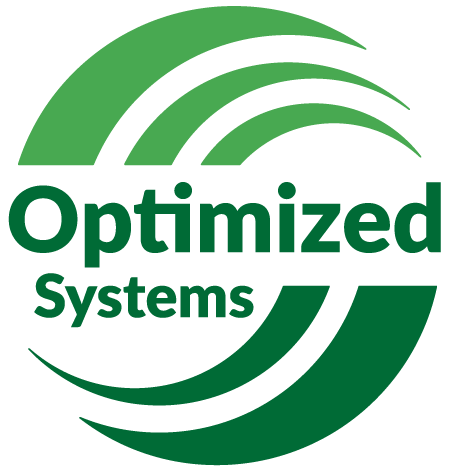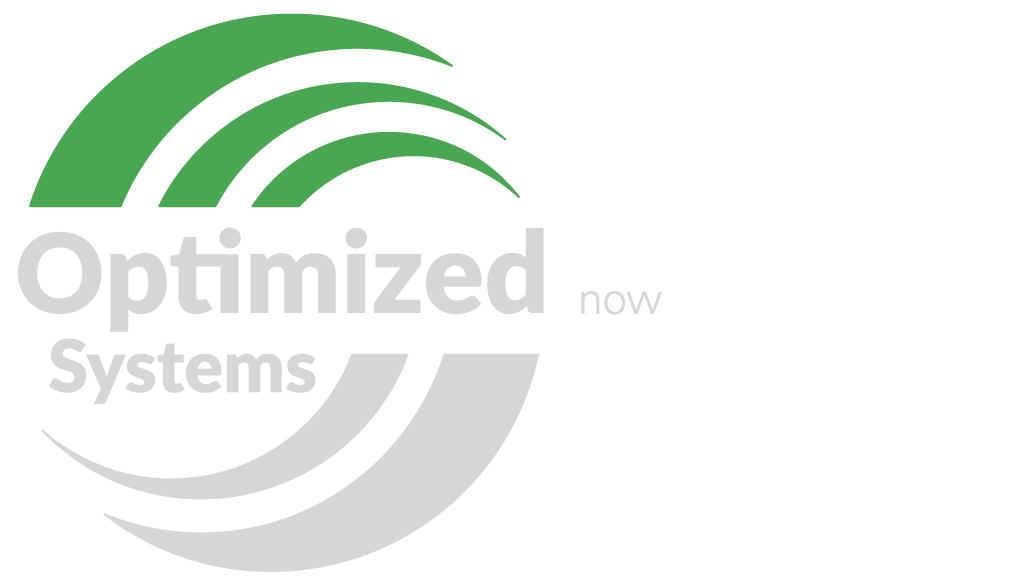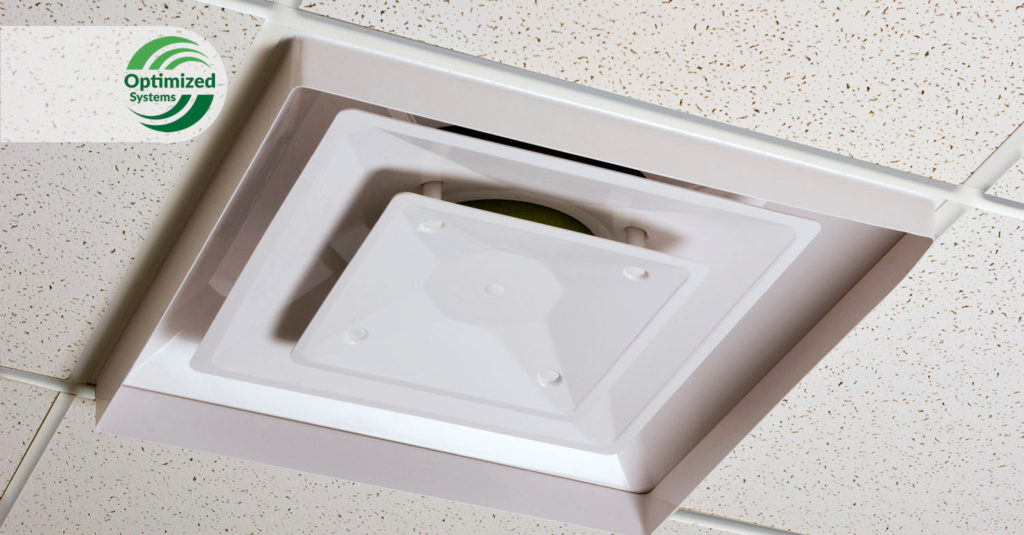With our communities preparing to re-open from the coronavirus shutdown, we have received numerous inquiries lately about what, if anything, should be done in the way of building operations to minimize the risk of transmitting COVID. We’ve checked out what some of the industry experts are saying about this and synthesized that information through Optimized Systems’ prism of engineering expertise and years of practical facility operations experience to offer some guidance for HVAC operations for non-healthcare buildings.
First Some Perspective
There is still much to be learned about COVID-19 and its transmission. Much of what is known indicates that the most effective transmission mitigation methods include avoidance of direct contact with infected persons and surfaces, and by maintaining at least six feet of distance from infected persons to avoid exposure to aerosolized pathogens and airborne droplets from coughs and sneezes. In the context of indoor environments, the mitigation of airborne associated risks focuses primarily on the HVAC system, which can impact the dissemination of infectious aerosols in the building. (Since this discussion deals with facility operations, issues concerning contaminated surfaces are not discussed.)
According to the recently published ASHRAE Position Document on Infectious Aerosols, there are some things building owners can do to ostensibly reduce the risk of exposure to airborne infectious pathogens such as COVID-19. Most of these methods involve dilution (increased ventilation), directional airflow control and filtration strategies. Humidity and temperature control strategies may also help by diminishing the viability of infectious pathogens. However, it is important to note that while some mitigation techniques are certain to have a positive impact, the actual effectiveness of the various methods is admittedly unknown. Moreover, some recommendations by some agencies may be marginally feasible to implement without significant modifications to the system.
Mitigation Methods to Consider
With respect to HVAC-driven strategies, the ASHRAE position document suggests that HVAC systems can only marginally prevent the dissemination of aerosolized pathogens in a building. Therefore, most industry experts agree that the more comprehensive the mitigation efforts, the better. It is also important to be mindful that buildings are unique and that building system components operate in a highly interdependent way, so changes must be planned from a holistic perspective to avoid unintended consequences, and with the understanding that operating costs will likely increase. Ultimately, the most appropriate mix of mitigation measures will be highly dependent upon the nature of the exposure risk, as well as building specific conditions, the details of which are beyond the scope of this discussion.
Keeping in mind the above caveats, below are some of the key HVAC strategies that ASHRAE indicates in their position document that are worth considering for non-healthcare buildings:
- Maximize outdoor air ventilation as conditions permit
- Increase HVAC filtration to MERV-13, or the highest achievable
- Keep systems running longer, non-stop if possible
- Utilize portable room air scrubbers equipped with HEPA or high-Merv filters (ref. AHAM 2015)
- Maintain temperature and humidity as applicable to circumstances
- Bypass energy recovery ventilation systems that may contaminate supplied air
Many of the above measures will likely have a notable impact on operating costs in the form of energy consumption, added maintenance and increased wear and tear on system components. Therefore, the better an owner understands the scope and magnitude of the risks targeted for mitigation before acting, the more pragmatic and relatively impactful mitigation efforts are likely to be.
Our Opinion
At the end of the day, Optimized Systems’ general position on HVAC-driven risk mitigation for COVID for non-healthcare buildings is: Yes, there are some things that building operators can do to lower exposure risks in their buildings. Because of the impact certain measures will have on operating costs and other operational aspects of the facility, the optimum and most sensible blend of mitigation efforts should reflect the perceived risk, relevant building configuration issues, and the HVAC system’s capabilities.
For buildings with greater risk concerns, more aggressive and targeted mitigation techniques are warranted and should be considered. Some aggressive strategies may require design changes. For lower-risk buildings with HVAC systems that are already properly designed, operated and maintained, there probably is not too much more that these owners can do than what is mentioned above to materially reduce risk. In any case, if a building is not operating properly, Optimized Systems believes it is prudent to address those issues to avoid unnecessary risks and to minimize operating costs.
Even though the risks associated with COVID-19 in ambient indoor air have not been fully established and the effectiveness of HVAC-driven mitigation efforts are uncertain, Optimized Systems identifies with building operators who are compelled to do whatever they reasonably can to minimize exposure risks for their building occupants. Afterall, the greatest risk may be the risk of doing nothing.
If you would like more specific guidance for your HVAC system concerning COVID or would like to have it checked for operating deficiencies, please reach out. We will help you find balanced solutions that make sense for your situation. Simply contact us at: LetsTalk@optimized-systems.com or via our website at https://optimized-systems.com/contact.
For a more detailed discussion on this topic, please refer to ASHRAE Position Document on Infectious Aerosols.
Optimized Systems is an Omaha-based specialty engineering and energy sustainability firm. Our primary mission is to help building owners and managers achieve and maintain the optimum balance of occupant comfort, building performance and energy efficiency. Founded in 2014, our team includes experienced design engineers, building automation controls specialists and former facility managers with extensive experience in diverse healthcare, education and research facilities.


